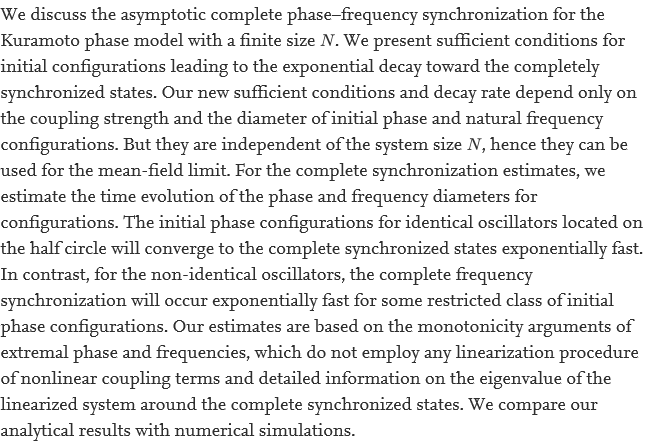논문
33
Kiwan Jeon, Hyung Joong Kim, Chang-Ock Lee, Jin Keun Seo and Eung Je Woo | Physics in Medicine & Biology 55 (2010)
32
Influence of the Asian monsoon on net ecosystem carbon exchange in two major ecosystems in Korea
H. Kwon; J. Kim; J. Hong and J.-H. Lim | Biogeosciences 7 (2010)
31
Surface layer similarity in the nocturnal boundary layer: the application of Hilbert-Huang transform
Jinkyu Hong, J. Kim, H. Ishikawa, Y. Ma | Biogeosciences 7 (2010)
30
29
Asymptotic dynamics for the Cucker?Smale-type model with the Rayleigh friction
Seung-Yeal Ha, Taeyoung Ha, Jong-Ho Kim | Journal of Physics A: Mathematical and Theoretical 43 (2010)
28
Computer assisted proofs of bifurcating solutions for nonlinear heat convection problems
Mitsuhiro T. Nakao; Yoshitaka Watanabe; Nobito Yamamoto; Takaaki Nishida; Myoung-Nyoung Kim | Journal of Scientific Computing 43 (2010)
27
On the complete synchronization of the Kuramoto phase model
Seung-Yeal Ha; Taeyoung Ha; Jong-Ho Kim | Physica D: Nonlinear Phenomena 239 (2010)
26
Emergent Behavior of a Cucker-Smale Type Particle Model With Nonlinear Velocity Couplings
Seung-Yeal Ha; Taeyoung Ha; Jong-Ho Kim | IEEE Transactions on Automatic Control 55 (2010)
25
Finger Vein Recognition by LBP based on SVM
Hyeon Chang Lee, Byung Jun Kang, Eui Chul Lee, Kang Ryoung Park | Journal of Zhejiang University SCIENCE C 11 (2010)
24
Yoo Chung | International Symposium on Parallel and Distributed Processing with Applications (2010)
컨텐츠담당자
성과평가팀:
배자호
042-
717-
5762















